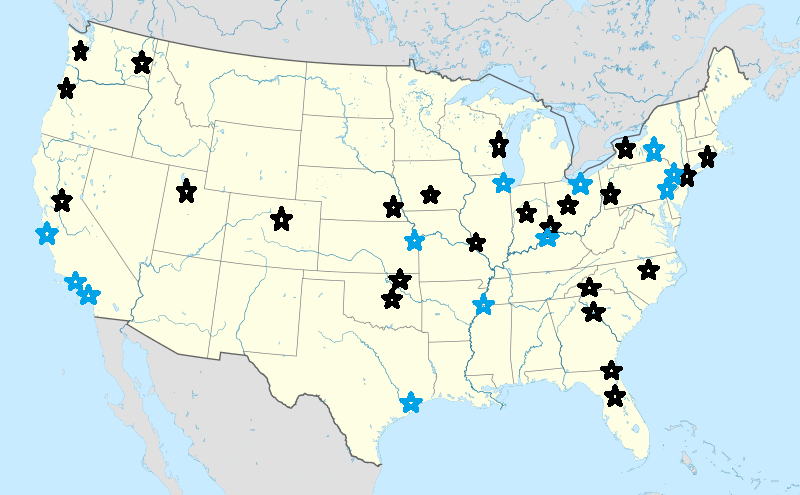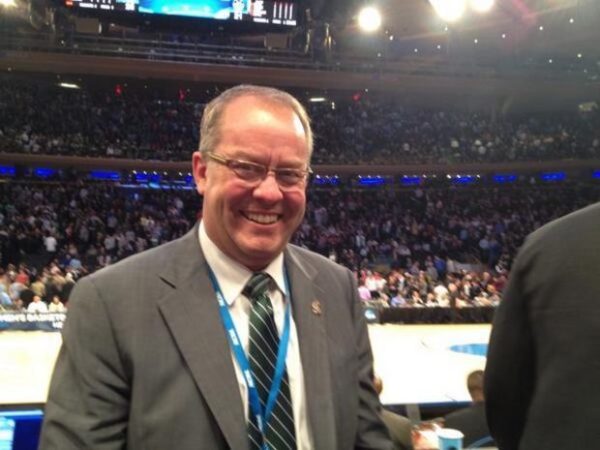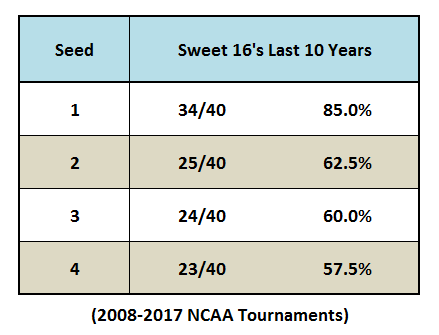On Improving the NCAA Tourney: Part II
Posted by Brad Jenkins (@bradjenk) on March 31st, 2017This is the second edition of our two-part look at ways to improve the overall structure of the NCAA Tournament. In our Part I piece published earlier this week, we made several recommendations concerning the selection and seeding of the 68 teams in the annual field. Today we will focus on improving the bracketing process. Over the years, the Selection Committee has endeavored to better balance the bracket while easing travel burdens on participating schools’ players and fans. Examples of these modifications include the current “pod” system for the first two rounds; ranking the four top overall seeds so that the top two teams are on opposite sides of the bracket; and, easing the restrictions on where schools from the same conference can be placed in the bracket. Since the last change was implemented, the committee claims that it has not needed to swap any teams off their true seed line. We think there is also an opportunity for further adjustments to that process, including one that is relatively simple and involves future tournament sites.

Black Stars – First/Second Round Sites (2015-17)
Blue Stars – Regional Sites (2015-17)
Go West Young Men — Just Not So Often
Our top suggestion deals with the issue of geographic balance. NCAA member schools’ presidents and chancellors have mandated that the Selection Committee consider traveling distance a priority when placing teams into each season’s bracket. But the committee is somewhat handicapped by the previously established locations that they have available for those placements. In the image above, we can see all of the regional sites for the last three NCAA Tournaments. In almost every year since the NCAA Tournament expanded to a full six-round event in 1985, the western region of the country has hosted two First/Second round sites plus a regional championship. To put it in mathematical terms, 25 percent of the NCAA Tournament prior to the Final Four is typically played in the Pacific and Mountain time zones. Yet, only 19 percent (six of 32) of the nation’s conferences are primarily located in those two zones — and that’s giving full western credit to the WAC even though three of its eight schools are actually in the Central time zone.
Similarly, only about 17 percent of all Division I schools reside in those two time zones. By moving one of those western sites to another part of the country each year, the NCAA Tournament would become much more representative of its membership in a geographic sense. The recommendation here is to only move one of the First/Second round locations out of the west — keeping the regional round located there for the sake of broader balance. As for where to relocate that site, the mid- to deep south needs more representation. Most of the major basketball conferences — the ACC, Big East, Big Ten and Big 12 — have plenty of viable nearby options in most years, but that’s not always the case for SEC schools. It’s not just about the big boys, though — there are a lot more mid-to-lower tier Division I schools that would have improved travel situations as well. There are plenty of options available in this region — cities with NBA arenas like New Orleans, Memphis, Atlanta, Nashville, Orlando and Miami.
To see how such a relatively small change could make a difference, we need to also examine how the committee geographically slots teams into the field. Teams on the top four seed lines are initially placed into the nearest available pod for the First and Second rounds. Then the rest of the field is placed according to the various bracketing principles that the committee must follow — one of which is proximity of the school to available sites. Inevitably, one or both of the western locations becomes a choice of last resort for most of the seed lines, because so much of the field hails from the Central and Eastern time zones. That’s not because teams in the western half of the country aren’t as good (see: Gonzaga and Oregon); rather, there’s just a much smaller pool of schools to pull from. To see a perfect example of this situation, let’s examine the Spokane, Washington, pod from the 2014 NCAA Tourney. That set of four teams consisted of #4 Michigan State, #13 Delaware, #5 Cincinnati and #12 Harvard. Now that’s a lot of travel miles! In case you are concerned that the top West Coast teams would be hurt by this change, consider that only 19 schools located in the Pacific and Mountain time zones have been seeded on the top four lines of the bracket over the last nine years — including the current tournament when four western schools were seeded among the nation’s top 16. That works out to about two teams per year, which matches perfectly with our plan of having only one first weekend site available out west.

Michigan State Athletic Director Mark Hollis is the current Chairman of the NCAA Selection Committee. (Mike Griffin/MLive.com)
Too Much Home Cooking
We also would like the NCAA to further limit home court advantage in the NCAA Tournament, both at the top and in the middle of the bracket — in other words, the same state should not be allowed to host a First/Second round pod in consecutive years. Prior to this year’s event, the state of North Carolina had hosted 10 of the past 12 events, a fact that has given highly-seeded North Carolina and Duke a sweet home fan base advantage nearly every year. Of course, thanks to that state’s now-repealed HB2 law, it remains unclear what the status will be going forward. In fact, that legislation is the reason why this year’s Greensboro pod was relocated from to Greenville, South Carolina, which leads us into another home court situation we wish the Selection Committee would endeavor to avoid.
Even though it was a #2 seed this season, Duke was forced into a hostile road atmosphere in its Second Round game with #7 seed South Carolina. This isn’t a frequent occurrence in the NCAA Tournament, but it has happened at least two other times in the last 13 years – in 2007, #3 Texas A&M played a Second Round game against #6 Louisville in Lexington, Kentucky; in 2004, #3 Pittsburgh faced a similar task in playing #6 Wisconsin in Milwaukee. Currently there are no guidelines or principles that instruct the committee to avoid such downstream circumstances, but we think they should consider outlawing it as long as it doesn’t require a seed-line change. The schools in the top quadrant of the bracket may have a proximity advantage during the first weekend of the Tournament — top seeds are only protected from unfavorable location match-ups in the First Round — but they should not have to play what is ostensibly a road game in the Second Round either.
Balancing Act at the Top
Our final recommendation is to improve the balance the top of the bracket each year. Overall, we think the committee does a good job in finding balance because most of the imbalances are created by incorrect seeds rather than poor placement of those seeds within the bracket itself. But we wish the committee would go by overall seed when placing the top 16 teams into the field. Even allowing for the prohibition of schools from the same league slotting as #1 and #2 seeds in the same region, and avoiding conference rematches in the regional semifinals, but add the caveat that it will only apply to teams ranked more than two places apart. For example, if North Carolina is the #1 overall seed and the S-curve would match the Tar Heels in the regional semifinals with a 16th overall Louisville team, don’t switch their potential match-up in that round to the 13th overall team. This change in philosophy may cause a few teams to be placed in regions that are farther away in distance, but we feel that the importance of bracket balance at the top outweighs possible travel situations. Remember, making it to the Sweet Sixteen is no guarantee for any team regardless of seeding.

In fact, over the past 10 NCAA Tournaments, only 60 percent of the teams seeded #2, #3 or #4 have made it to the regionals. It just doesn’t make sense to damage the balance and fairness of the entire upper quadrant of the bracket to provide favoritism to a group that that is no lock to get there. We will keep a watch on how seriously the Selection Committee considers recommendations from the NABC ad hoc committee in the future, hoping that any resulting changes to come are thoughtfully considered and will improve the overall experience of the best three weeks in sports.










































